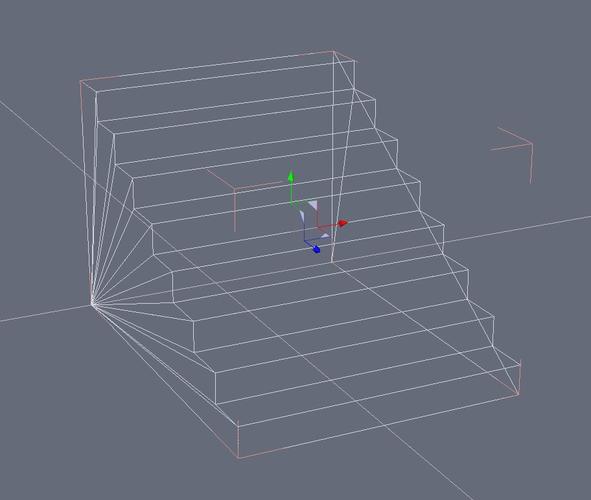Creating Content what I have to do
I am new in the creating of content. I want to creat a few rooms maybe a full house but I have a problem with the number of polygons.
I know more polygones are better but if I look after other rooms and there polygonframes they look very simple. Ohter objects like the new SciFi rifle have so much polygons for the details (for example a round part at the back of the weapon is an own half ball with at least 12 sections). So what should I do?
For example this is a step I made for a room with different floors. The sides normaly are plaine but for the result in DAZ I have to split it with the triangular function. Is the polygons are good or should I break the stairs in more polygons? And what should I do with walls and floors?




Comments
For modelling buildings, I suggest that you look at the tutorials available on the GeekAtPlay website
http://www.geekatplay.com/hp4.php
There is one on how to create steps as well.
There are four series of tuts on Hexagon by Gary Miller
The documentation also has an example of making stairs using the multiple copy tool.
Studio is not going to hiccup with the amount of polygons your looking to use but I tend to stay away from triangles and use 4 faces, I've used more than 4 but 3 is not recommend, or it wasn't at some point.
When you make a flat edge with limited polygons you will need to define the edge in Hex or Studio as being sharp. I didn't stay with hex long enough to find out how but in Studio you will see an option when you select the surface of the model to make it sharp or smooth. As you subdivide or add more polygons you don't necessarily need to do this but your adding more geometry to the model and more resources required to use it. For walls and doors the limited geometry is fine but when i find myself doing steps they're not completely flat. The edge of the step or a desk tends to be rounded off and often times using a very sharp edge will look unnatural.
Thank you for your answers. The triage thing I understand and the not sharp edges i understand too.
Back to my example steps. This is the standart version. I do not want to change the shape, no round edges or used steps.
-Now, is it reasonable to use more polygons if i do not want to change the shape of the steps?
And
-What will happen when I use more polygons?
A good rule of thumb when modeling is to "avoid n-gons". As I see it, the sides of your steps are big n-gons. You might want to break those down into a series of horizontal (or vertical) rectangles instead of one big n-gon.
The reason for avoiding n-gons is that most programs (including DAZ Studio) don't handle n-gons directly. Instead, they will triangulate your n-gon into some set of triangles. Exactly how each program does this is different and can lead to different results when you render. The way to take control of the result is to use quadrilaterals in your model directly.
Here's a link to the tutorial Gary Miller did over at Geek At Play-
https://www.youtube.com/watch?v=DkvIslWzYy4
N-gon are seriously bad modelling and can cause software to crash. Either quads or tringles are acceptable. Some softwares can't even load an n-gon. All game engines work with triangles, there is absolutely nothing wrong with using triangles. Remember that every quad can be split into two triangles. Hexagon has a utility function to divide n-gons into triangles.
Now for stairs like that, depending on where they're going, you'd remove the sides completely and add stringers, and if the side are going to be exposed, then you'd want to bevel the edges at each stair which will add complexity to the model but remember no poly should have more than 4 sides.
Ok the n-gon problem I understand it.
Next problem Walls and Floors. I created this wall to combine it with the steps. It is only for example in the forum.
How much Polygons need this wall to creat a sellable part of a room?
Again, total n00b here, but I'd say for a room it's easy to model the rectangular walls and floors, etc. What makes a room a compelling set piece is the decor: furniture, window sill treatments, curtains, wallpaper, unusual architecture (think Frank Lloyd-Wright), etc. Most of the work in making a good set piece seems to be in the materials and texturing, particularly when it comes to a boxy room.
Imagine a plain functional staircase in any two-story colonial suburban house compared to a grand staircase.
My two cents :-).